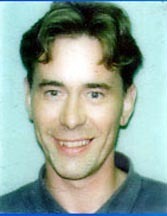
Ian Shipsey, a Purdue University physics professor who first heard the voice of his 11-year-old daughter in 2002 when he received a cochlear implant, will deliver the first lecture in the University of Notre Dames Department of Physics Fall 2007 Colloquium Series Wednesday (Sept. 12) at 4 p.m. in room 118 of the Nieuwland Science Hall.
Shipsheys lecture, titledBringing Hearing to the Deaf. Hearing Implants: A Technical and Personal Account,is free and open to the public.
Shipsey, who was profoundly deaf from 1989 until he underwent cochlea implant surgery, will be discussing the physiology of natural hearing from the perspective of a particle physicist. He will describe the function of cochlear implants in the context of historical treatments, electrical engineering, psychophysics, clinical evaluation of efficacy and personal experience. The social implications of cochlear implantation and the future outlook for auditory prostheses also will be discussed.
The colloquium series also will include researchers from the Argonne National Laboratory, the University of Michigan, and international universities in Barcelona, Spain and Ottawa. All lectures will be held at 4 p.m. in room 118 of Nieuwland Hall. The lectures are geared toward science students and each lecture will be followed by a brief question-and-answer period.
Other lectures in the series include:
Sept. 19 -70 Years of Nuclear Physics at Notre Dame.Michael Wiescher, Frank M. Freimann professor of physics and director for the Joint Institute for Nuclear Astrophysics (JINA) at Notre Dame, will speak on the leading role that Notre Dame has played in nuclear physics. From building one of the first Van de Graff accelerators in 1930s to the creation of atom smashers in 1940s in the basement of the old Science Hall,Notre Dame nuclear physicists have advanced, and continue to advance, nuclear structure theory.
Sept. 26 -The Neutrino Oscillations Industry.high energy Physicist Maury Goodman from the Argonne National Laboratory will speak on the neutrino oscillation industry. Neutrinos are fundamental particles which come from a variety of sources including the atmosphere, supernova, accelerators, cosmological remnants, reactors, the sun and energetic astrophysical systems. Goodman will present recent progress and insights in the neutrino oscillations industry.
Oct. 3 -Charm Physics.Particle physicist David Asner from Carleton University in Ottawa will speak on charm quarks and fundamental particle physics. Asners primary research is based at the Cornell Electron Storage Ring (CESR) at Cornell University which collides beams of electrons and positrons (anti-electrons). Research has revealed important properties of the bottom and charm quarks and the tau lepton.
Oct. 10 -Blasts from the PastObservations of Gamma-Ray Bursts and Other Transients.University of Michigan physics professor Carl Akerlof is the leader of the Robotic Optical Transient Search Experiment collaboration, an international effort to observe the prompt optical counterpart of gamma-ray bursts and other transients. His research is performed in collaboration with physicists and astrophysicists from Los Alamos Laboratory as well as universities in Australia, Germany and Turkey.
Oct. 17 -Physics with a Rare Isotope Accelerator.Michigan State University Distinguished Professor of Physics Bradley Sherrill utilizes research facilities to manipulate atomic nuclei to create new isotopes.Sherrill is based at the National Superconducting Cyclotron Laboratory at MSU and studies the nuclear reactions that take place in various astrophysical environments. He investigates radioactive nuclei that play a key role in supernovae explosions, with the goal of better understanding nuclear physics’ contributions to cataclysmic events.
Oct. 31 – Mariano Quiros from the Institut de Física d’Altes Energies at the Universitat Autònoma de Barcelona will be speaking on a topic yet to be announced.
Nov. 14 -Why has High-Temperature Superconductivity Been Unsolved?Arizona State University physics professor John Dow will discuss the reasons why high-temperature superconductivity has remained unsolved for 20 years.Dows primary area of research is in condensed matter theory. Currently, he is working on a theoretical explanation for high-Tc superconductivity, and is a visiting professor at of Notre Dame.
More information on the lectures is available at: http://www.nd.edu/~sciwww/Talks_2007-08.htm
Contact: Lesley Krueger, senior staff administrator, Department of Physics, (574) 631-4086, " lkrueger@nd.edu ":mailto:lkrueger@nd.edu
TopicID: 24426